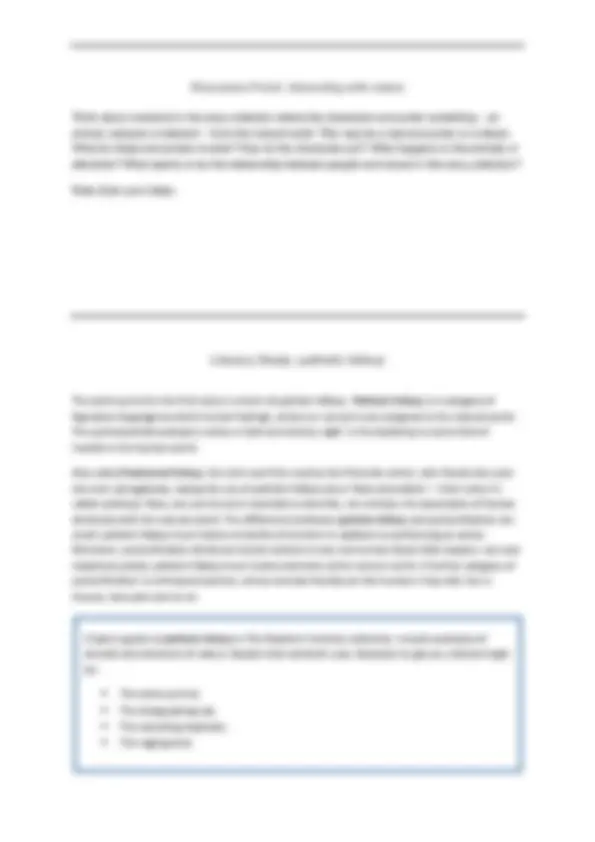



Study with the several resources on Docsity

Earn points by helping other students or get them with a premium plan


Prepare for your exams
Study with the several resources on Docsity

Earn points to download
Earn points by helping other students or get them with a premium plan
Community
Ask the community for help and clear up your study doubts
Discover the best universities in your country according to Docsity users
Free resources
Download our free guides on studying techniques, anxiety management strategies, and thesis advice from Docsity tutors
A lesson focus on the symbolic animals in haruki murakami's short story collection, 'the elephant vanishes'. Knowledge checks, understanding and interpretation questions, and a discussion point. The significance of the media reaction, the relationship between the elephant and the zookeeper, the changes in the surrounding enclosures, the narrator's occupation, the date between the narrator and the woman, and the ending of the story. The document also introduces the concept of pathetic fallacy and provides examples from the collection.
What you will learn
Typology: Schemes and Mind Maps
1 / 3

This page cannot be seen from the preview
Don't miss anything!


Lesson Focus: Symbolic Animals The Elephant Vanishes is the title piece of the short story collection, but Murakami saves this story till last. By now, the reader has encountered many animals scattered throughout the anthology, some lost or disappeared, others appearing only in dreams or fantasy sequences. The purpose of this lesson is to understand the symbolism of aspects of the natural world in the short story anthology. Knowledge Check Try to answer these questions from memory:
1. What time does the narrator’s alarm clock wake him up in the morning? a) 6. b) 6. c) 6. d) 6.